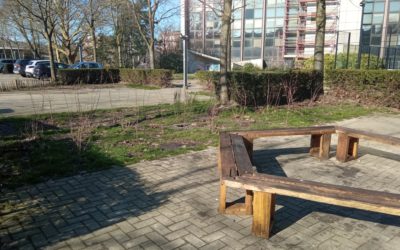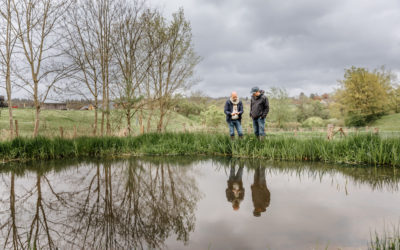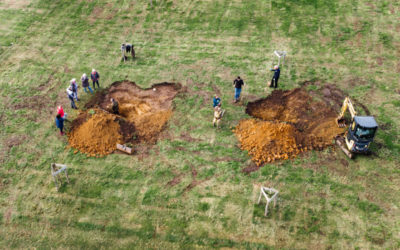Part of a car park has been redeveloped to create a new, welcoming and green space.
UNESCO Man & Biosphere area KempenBroek
The project
The UNESCO Man & Biosphere Area KempenBroek is a cross-border collaboration spanning Belgian and Dutch Limburg and North Brabant. This little-known region stretches across the municipalities of Bocholt, Bree, Kinrooi, Maaseik, Cranendonck, Weert, and Nederweert. It’s a hidden gem, full of secrets waiting to be uncovered—charming, mysterious, and quietly beautiful.
The landscape is incredibly diverse, offering something for everyone. You’ll find untouched trails winding through mysterious wetlands, stream valleys, heathlands, and farmland. It’s the perfect place to experience open space and the sound of silence. Whether you prefer walking, cycling, mountain biking, or horseback riding, there’s a path for you.
Many rare plant and animal species thrive here. Did you know that KempenBroek is one of the richest areas in the Benelux for dragonfly species? In recent years, beavers have made a comeback, and with a bit of luck, you might even spot a red deer.
On July 5, 2024, UNESCO officially recognized KempenBroek as Belgium’s first Man & Biosphere Reserve, the second in the Netherlands, and the first cross-border reserve in the Benelux!
UNESCO Man & Biosphere Areas are places where people and nature coexist in harmony. These regions serve as living laboratories for sustainable development—testing local solutions to global challenges like biodiversity loss and climate change.
Each Man & Biosphere Area focuses on three interconnected core missions:
- Protect: We work together to safeguard nature, landscapes, and heritage. This not only preserves local flora and fauna but also the vital benefits nature provides to us all.
- Develop: We aim to build a sustainable local economy and society, with a focus on supporting eco-friendly agriculture and tourism.
- Learn and Inspire: We conduct research to guide our actions and monitor progress. The knowledge we gain is shared through schools, educational programs, and with the wider community.
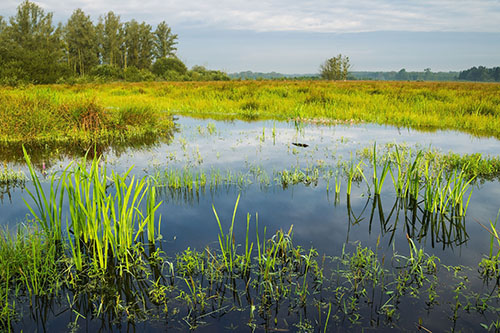
Project location
Contribution(s)
Project costs
Participant(s)
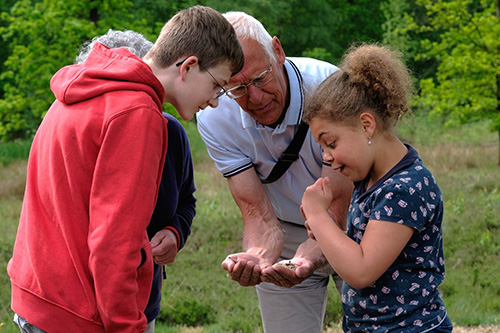
The broad partnership consists of more than 40 organizations and includes municipalities, provinces, and organizations from the nature conservation, agriculture, heritage, and tourism sectors. They each contribute in their own way—either through their regular operations or through joint projects carried out in addition to their core activities.
How are the criteria of the objective met?
Nature-based solutions
- Use nature/natural processes that support biodiversity to address the challenges related to climate change, water management (including flood management) and land degradation;
- Have respect for and/or improve the specific environmental and ecological characteristics of the area (e.g. the topography, the type of landscape, the local plant and animal life, …);
- Incorporate those natural processes into the surrounding area and environment;
- Implement those natural processes in a way that is consistent with other actions undertaken to address these challenges (e.g. rehabilitate native plant species around water amenities that are set up to improve water management, …);
- Strengthen ecological connectivity between nature-based solutions and surrounding natural areas.
Possible initiatives in which the project is involved :
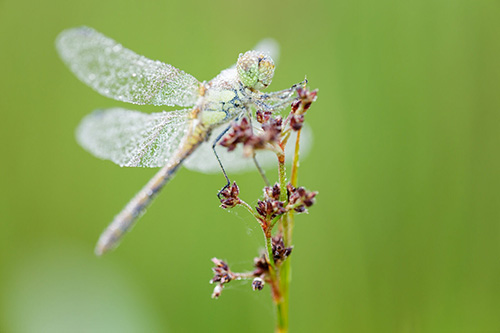
Ecological connectivity
- Facilitate the safe migration of animal and/or plant species across the different zones of the green-blue network;
- Use native species, and subspecies that are more resilient and resistant to climate change, if appropriate;
- Restore and/or promote biodiverse landscape elements (e.g. trees, hedges, flowers, rivers) along linear infrastructures (e.g. roads, railroads);
- Have respect for and/or improve the environmental and ecological characteristics of the area;
- Incorporate these amenities into the surrounding area and environment;
- Manage the amenities ecologically (e.g. no use or rational use of pesticides).
The restoration of natural areas and biodiversity aims to better connect nature reserves within the UNESCO Man & Biosphere Area, as well as with the surrounding regions. An increasing number of nature reserves are applying the principles of rewilding or process-based nature management, where human intervention is reduced to a minimum.
Long-term maintenance
The projects carried out by the partners in this collaboration consistently draw on the natural system —ecosystem restoration is the guiding principle in biodiversity initiatives— and make maximum use of nature-based solutions. In recent years, significant investments have been made in restoring the water system and former wetlands —not only to support biodiversity, but also to create more space for water, which is urgently needed in times of climate change. These investments and efforts will continue in the coming years, ensuring long-term resilience and impact.
Collaboration in the area is structural and guided by a Master Plan with a long-term vision. The various partners working on ecosystem restoration and biodiversity consider this their core business, ensuring the long-term continuity and sustainability of these measures.
Benefits
By working together to create a resilient landscape with space for nature, water, and biodiversity, we are shaping a future-proof environment that can continue to provide essential ecosystem services — benefiting both nature itself and the people living in and around the area.
Other projects linked to the objective: "Nature-based solutions"
Ponds in Rochefort
On the way to 100 ponds in Rochefort!
Ponds in Amay
Towards a total of 15 participatory projects for ponds in Amay!
